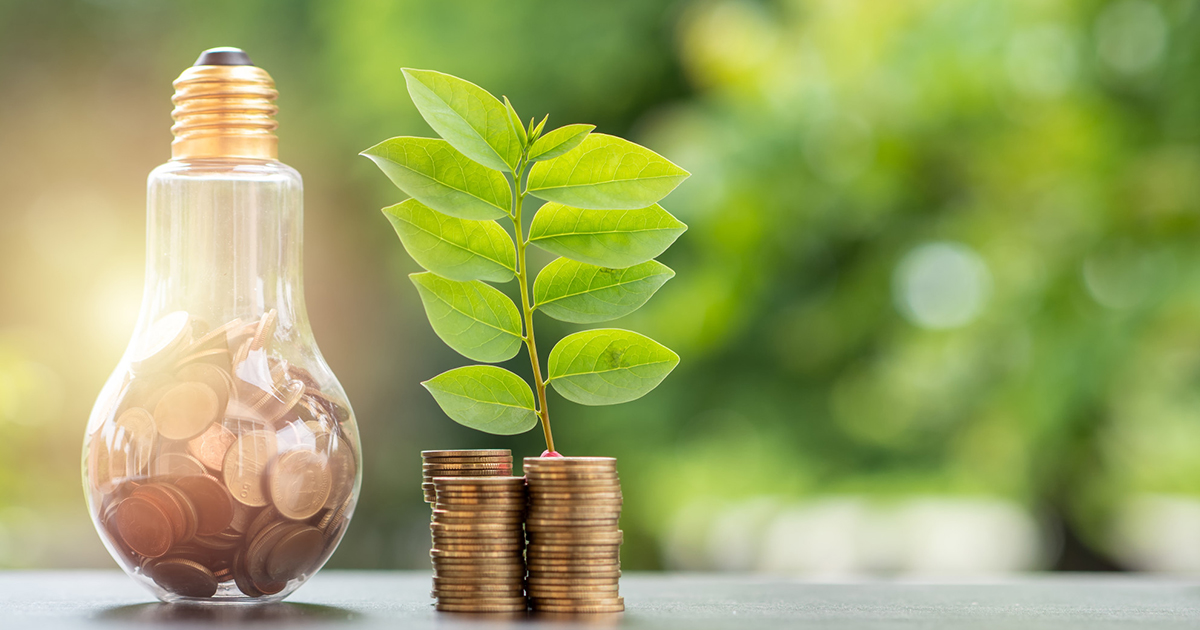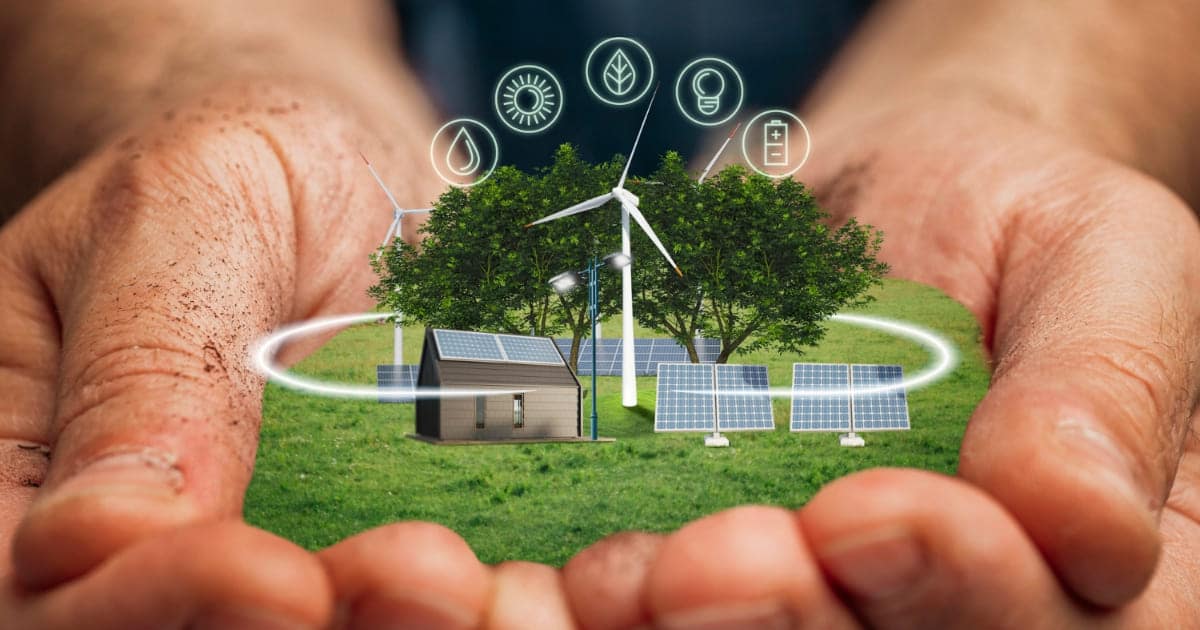Lifestyle
Trends in Home Energy Efficiency

As sustainability and environmental consciousness continue to gain importance, the focus on improving home energy efficiency has become a priority for homeowners. From innovative technologies to eco-friendly practices, the trends in home energy efficiency are evolving to create more sustainable and cost-effective living spaces. In this article, we explore the latest trends shaping the realm of energy efficiency in homes, offering insights and solutions to help homeowners reduce energy consumption, lower bills, and minimize their environmental impact.
1 Smart Home Integration:
One of the prominent trends in home energy efficiency is the integration of smart home technologies that offer intuitive control and optimization of energy use. Smart thermostats, lighting systems, and appliances enable homeowners to monitor and adjust energy consumption based on preferences and schedules. With real-time insights and automation capabilities, smart home devices promote energy efficiency by reducing wastage and optimizing energy usage in a personalized and convenient manner.
2. Energy-Efficient Appliances:
The adoption of energy-efficient appliances is a significant trend in improving home energy efficiency. Energy Star-rated refrigerators, washing machines, dishwashers, and HVAC systems are designed to consume less energy while maintaining optimal performance. By investing in energy-efficient appliances, homeowners can lower their electricity consumption, decrease utility costs, and lessen their environmental footprint through reduced greenhouse gas emissions.
3. Insulation and Weatherization:
Proper insulation and weatherization play a crucial role in enhancing home energy efficiency by minimizing heat loss and air infiltration. Trends in insulation materials, such as spray foam, cellulose, and aerogel, offer effective thermal barriers that prevent energy waste and improve indoor comfort. By addressing air leaks, sealing gaps, and upgrading insulation levels, homeowners can create a more energy-efficient and sustainable living environment that retains heat in the winter and stays cool in the summer.
4. Solar Power Solutions:
The integration of solar power solutions is a growing trend in boosting home energy efficiency and transitioning towards renewable energy sources. Solar panels harness sunlight to generate clean electricity, reducing reliance on grid power and lowering energy bills over time. Advances in solar technology, such as solar tiles, solar batteries, and solar trackers, offer homeowners customizable and efficient options to generate sustainable energy and promote eco-friendly living practice

Image by: Yandex.com
5. Energy-Efficient Lighting:
The widespread adoption of energy-efficient lighting, such as LED bulbs and fixtures, is a fundamental trend in reducing electricity consumption and enhancing home energy efficiency. LED lighting offers superior energy efficiency, longer lifespan, and brighter illumination compared to traditional incandescent bulbs. By replacing outdated lighting with energy-efficient LED alternatives, homeowners can create well-lit and energy-saving environments that contribute to lower energy costs and reduced environmental impact.
6. Passive House Design:
Passive house design principles are revolutionizing home energy efficiency by prioritizing insulation, airtight construction, and passive solar strategies to minimize energy demand. Passive homes are engineered to maintain consistent indoor temperatures, reduce heating and cooling needs, and optimize natural light and ventilation. By incorporating passive house elements, such as triple-pane windows, heat recovery ventilation, and thermal mass, homeowners can achieve exceptional energy efficiency and sustainability in their living spaces.
7. Electric Vehicles and Charging Infrastructure:
The rise of electric vehicles (EVs) has influenced home energy efficiency trends by increasing the demand for home charging solutions. Homeowners are installing EV charging stations, solar carports, and smart grid technologies to support the integration of electric transportation into their energy systems. By leveraging renewable energy sources to charge EVs, homeowners can further reduce their carbon footprint and enhance overall energy efficiency in a sustainable and integrated manner.
8. Energy Monitoring Systems:
Energy monitoring systems offer homeowners valuable insights into their energy consumption patterns, allowing for informed decision-making and behavior adjustments to improve energy efficiency. Smart energy monitors, whole-house meters, and energy management platforms provide real-time data on energy usage, peak demand periods, and cost-saving opportunities. By tracking energy consumption and identifying inefficiencies, homeowners can optimize their energy usage, reduce wastage, and enhance overall energy efficiency in their homes.
9. Green Building Certifications:
The pursuit of green building certifications, such as LEED (Leadership in Energy and Environmental Design) and ENERGY STAR, is a trend demonstrating a commitment to sustainable building practices and energy efficiency standards. Homes that meet specific green building criteria are recognized for their energy savings, water efficiency, indoor air quality, and environmental stewardship. By attaining green building certifications, homeowners can demonstrate their dedication to sustainable living and contribute to a greener and more energy-efficient built environment.

Image by: Yandex.com
10. Eco-Friendly Materials and Construction:
The use of eco-friendly materials and sustainable construction practices is a trend shaping home energy efficiency by reducing environmental impact and promoting resource conservation. High-performance windows, recycled materials, natural insulation, and low-VOC (volatile organic compound) paints contribute to healthier indoor environments and energy-efficient homes. By incorporating eco-friendly materials and green building practices, homeowners can create sustainable living spaces that prioritize energy efficiency, comfort, and longevity.
Conclusion:
The trends in home energy efficiency are driving a shift towards sustainable living practices, energy conservation, and environmental responsibility. By adopting smart technologies, energy-efficient appliances, solar power solutions, and sustainable building practices, homeowners can enhance their living environments, reduce energy costs, and contribute to a greener future. Embracing these trends in energy efficiency empowers homeowners to create resilient, eco-friendly homes that promote energy savings, comfort, and sustainability for generations to come.
Meta Description:
Discover the latest trends in home energy efficiency, from smart home integration to solar power solutions, that empower homeowners to reduce energy consumption, lower utility bills, and create sustainable living spaces. Embrace innovative energy efficiency trends for a greener and cost-effective home environment.
Lifestyle
Godspeed Hoodie Review and Care Guide

Introduction
The Godspeed Hoodie completely changed my wardrobe in 2023. Two years later, I’m wearing the same black one almost every day, and it still gets compliments. The weight, the fit, the way it ages this is the hoodie that ended my search. Below is the real-world guide I give to every friend who asks, “How is yours still perfect?” Everything is tested on my own collection of eight Godspeed Hoodie pieces.
Godspeed Hoodie: The 2025 Lifetime Hoodie Guide
500 wears later, here’s the truth.
1. Godspeed Hoodie Fabric: The Specs That Matter in 2025
Every Godspeed Hoodie drops with 440-460 GSM 80/20 ring-spun cotton/poly French terry. That GSM number is why it feels expensive the second you touch it. Ring-spun cotton outside stays smooth forever. 20% poly stops any stretching or bagging at the hem. Heavy brushed fleece inside is softer than most blankets. Metal aglets on drawstrings, double-lined hood, 1×1 ribbing that snaps back instantly. This exact construction is why my 2023 black Godspeed Hoodie looks identical to my new 2025 drop.
2. My Bulletproof Godspeed Hoodie Wash Routine (500+ Washes Proven)
This is the routine I never deviate from:
- Turn it inside out immediately
- Cold water 30°C max
- Gentle cycle, low spin
- 30-40 ml liquid detergent for darks (I use Hex or Persil Black)
- Zero softener, zero bleach, zero pods
- Air dry flat on mesh rack (primary method)
- OR tumble low heat exactly 9 minutes, then remove damp
Result after 500+ cycles: zero shrinkage, zero fade, fleece still fluffy. My first Godspeed Hoodie has been through this routine literally every 4-5 days for two years. Still perfect.
3. Drying & Storage That Keeps Your Godspeed Hoodie Forever New
Dryer rule: maximum 9 minutes low heat only to fluff fleece, then flat dry. Never fully dry in the machine. Never hang wet shoulders will stretch 100% guaranteed. Fold neatly and store flat ina drawer. I use cotton dust bags in summer. Cedar sachets keep everything fresh. Follow this, and your Godspeed Hoodie will outlast every other piece you own.
4. Daily Godspeed Hoodie Outfits I Actually Wear in 2025
- Monday-Friday uniform: Black Godspeed Hoodie + black slim jeans + New Balance 550
- Travel fit: Heather grey Godspeed Hoodie + full Godspeed Sweatsuit + Godspeed Beanie
- Date night: Bone Godspeed Hoodie under godspeed varsity jacket + dark denim
- Rainy days: Navy Godspeed Hoodie under Godspeed Jacket
- Gym to street: Olive Godspeed Hoodie with matching sweats
Every single outfit works because the Godspeed Hoodie carries the entire look.
Conclusion
I’ve worn my Godspeed Hoodie almost every day since 2021. Here’s the real truth about the fabric, how it holds up, and the only wash routine that actually works.The Godspeed Hoodie is a beloved staple for its comfort and clean design. It feels premium from the first wear and fits perfectly into daily life. To maintain its quality, knowing how to care for it is essential. This guide explains the hoodie’s material in simple terms. We provide clear washing and drying instructions.
You will also find ideas for styling it with other pieces. Let’s keep your favorite sweatshirt looking and feeling new. Choosing the right Godspeed Hoodie is a smart decision for your wardrobe. It offers a perfect balance of comfort and timeless style. This piece stands out for its quality and thoughtful design. To keep it looking and feeling its best, proper care is key. This guide will explain its material in simple terms. You will learn foolproof washing and drying methods. We will also show how to style it with other Godspeed Clothing pieces. Let’s ensure your favorite pullover remains a go-to for years.
This guide is your complete resource for this essential item. We explain what makes its fabric so special. You will get clear, step-by-step care instructions. Discover how to integrate it into your daily style effortlessly. Consider this your handbook for maximizing value and wear. The first thing you notice is the fabric’s weight. It feels substantial and well in your hands. This isn’t a flimsy garment that will lose shape quickly. The interior is incredibly soft,
Read More BLOG
FAQs
1. Will my Godspeed Hoodie shrink if I mess up once?
Yes – one hot wash or high dry will shrink it about 1.5 inches. Cold wash + air dry = zero shrinkage ever. 500+ washes on mine prove it.
2. Which Godspeed Hoodie color is truly bulletproof?
Jet black and bone white. Black stays blacker than any brand I’ve tried. Bone ages to a perfect vintage cream without looking dirty.
3. Is Godspeed Clothing still true to size in 2025 drops?
Yes – the same as 2023. Medium fits 5’9″-6’0″ perfectly relaxed. Large for 6’1″+ or intentional oversized. Never size down.
4. Best piece to pair with the Godspeed Hoodie right now?
The Godspeed Sweatsuit pants (same 440 GSM fabric) or the godspeed varsity jacket for instant heat. Both are worn daily by most serious collectors.
5. Godspeed Hoodie vs every other premium brand in 2025 who wins?
Godspeed wins on weight, fade resistance, and fleece softness. Nothing else I own (and I own everything) comes close after two years of abuse.
Lifestyle
7 Essential Tips for Using Disposable Gloves Properly

Introduction
Disposable Gloves are standard in countless industries, from healthcare and food processing to manufacturing and laboratory work. They shield workers, protect products, and support compliance with international safety standards. But even the highest quality gloves cannot do their job if they are used incorrectly. Small mistakes in fit, handling, or disposal can reduce protection and introduce avoidable risks.
The following seven tips sarung tangan offer a clear, practical guide to using Disposable Gloves the right way. These insights help teams improve safety, reduce waste, and get the best performance out of every pair.
Top 7 Essential Tips for Using Disposable Gloves Properly
1. Choose the Right Material for the Task
Not all Disposable Gloves are created equal. Each material offers different strengths, and the right choice depends on the environment and hazards involved.
Nitrile gloves are a top choice for industries that demand chemical resistance, durability, and low allergy risk. They work well in medical settings, labs, automotive applications, and industrial environments that involve oils and solvents.
Latex gloves offer strong elasticity and comfort, making them ideal for precision tasks. They remain popular in medical and dental fields, but users must consider latex allergies and regulatory requirements.
Vinyl gloves are economical and suitable for low-risk settings that involve short tasks or frequent glove changes, such as in food service.
Selecting the right glove material ensures reliable protection and reduces breakage during use.
2. Ensure Proper Fit for Comfort and Safety
A glove that fits poorly compromises both safety and efficiency. A glove that is too tight may tear during routine movements. A glove that is too loose reduces dexterity and can snag on tools or equipment.
Workers should check that the glove conforms to the shape of the hand without restricting circulation. Fingers should move freely. If the glove stretches excessively, rides down the wrist, or feels loose at the fingertips, it is the wrong size. Proper sizing improves performance and reduces waste from torn or unused gloves.
3. Inspect Gloves Before Each Use
Even high quality Disposable Gloves can be damaged during storage or handling. A quick visual and physical inspection helps prevent accidents.
Before putting on a pair, check for small tears, thinning, discoloration, and weak points around the fingertips or cuff. Run a finger along the glove surface to feel for imperfections. If there are any doubts, discard the glove and use a new one.
Routine inspection is especially important in high risk environments such as chemical labs or medical facilities, where a single defect can expose the user to hazards.
4. Put On and Remove Gloves the Right Way
Correct donning and doffing techniques reduce contamination and protect both the user and the work environment.
When putting on gloves:
- Start with clean, dry hands.
- Hold the glove by the cuff and slide it on without snapping it or stretching it excessively.
- Avoid touching surfaces or equipment until the glove is fully in place.
When removing gloves:
- Pinch the glove at the wrist and peel it away from the hand, turning it inside out.
- Hold the removed glove in the gloved hand.
- Slide an ungloved finger under the cuff of the remaining glove and peel it off the same way, avoiding contact with the outside surface.
This simple method minimizes cross contamination and aligns with global hygiene standards.
5. Change Gloves Frequently and at the Right Time
One of the most common errors across industries is wearing the same pair of gloves for too long. Disposable Gloves are designed for single use. The moment they become torn, visibly soiled, or contaminated, they should be replaced.
Gloves should also be changed:
- After touching non-sterile surfaces
- After handling chemicals or hazardous materials
- Between patients, tasks, or food categories
- When moving between clean and dirty zones
Regular glove changes protect products, clients, and workers, and they help maintain compliance with safety protocols.
6. Store Gloves Correctly to Preserve Quality
Glove performance depends not only on materials but also on proper storage. Heat, humidity, and sunlight can weaken Disposable Gloves long before they are used.
To maintain product integrity:
- Store gloves in a cool, dry place
- Keep them away from direct sunlight and high heat
- Rotate inventory to ensure older stock is used first
- Keep unopened boxes sealed until needed
These simple steps extend the useful life of the product and reduce the risk of glove failure during critical tasks.
7. Dispose of Gloves Safely and Responsibly
The “disposable” in Disposable Gloves does not mean “careless.” Proper disposal protects people and the environment.
Used gloves should be placed immediately into the appropriate waste container. In healthcare or lab settings, this means a biohazard or chemical waste bin. In food service or industrial environments, standard waste containers may be acceptable, depending on local regulations.
Never reuse disposable gloves. Reuse increases contamination risks and may violate industry safety guidelines.
Final Thoughts
Disposable Gloves play a vital role in global safety practices. When chosen carefully, used correctly, and disposed of responsibly, they offer reliable protection and support high standards of hygiene and quality. These seven tips help teams get the most from their equipment while reducing errors that can lead to contamination, product damage, or personal injury.
By focusing on proper glove use, businesses strengthen compliance, improve workplace safety, and demonstrate a commitment to professional excellence.
Lifestyle
Comme Des Garcons: Fashion Meets Art Revolution

Introduction
Comme des Garçons, often abbreviated as CDG, is not merely a clothing brand; it is a movement, a statement, and an ever-evolving dialogue between fashion, art, and identity. Founded in Tokyo in 1969 by the visionary designer Rei Kawakubo, CDG has continually challenged traditional notions of beauty, aesthetics, and functionality in clothing. Unlike conventional fashion houses that follow trends, CDG has consistently defied them, creating pieces that provoke thought and evoke emotion. For fashion enthusiasts, owning a piece of CDG is not just about style—it is about embracing a philosophy that celebrates individuality and conceptual creativity.
The Philosophy Behind CDG Clothing
At the heart of CDG is Rei Kawakubo’s idea of “anti-fashion.” Her designs often use asymmetry, deconstruction, and unusual shapes to challenge normal ideas of beauty. Every piece, from jackets to hoodies, reflects this philosophy. CDG isn’t about mass appeal—it’s for people who see fashion as a way to express themselves. Wearing a CDG hoodie isn’t just about staying warm; it’s a statement about individuality, boldness, and breaking the rules.
CDG also blends art and fashion. Each collection feels like an art piece, making people think differently about clothes. The brand uses unusual materials and shapes to change how we see familiar garments. Wearing a CDG hoodie or jacket is more than putting on clothes—it’s joining a conversation about the future of fashion.
Iconic Pieces: CDG Hoodies and Streetwear Revolution
CDG hoodies are some of the brand’s most popular and accessible pieces, combining comfort, style, and bold design. Unlike regular hoodies, they often feature eye-catching prints, logos, and creative twists that challenge normal streetwear. They make a statement whether worn with jeans or high-fashion pants.
A CDG hoodie turns casual wear into wearable art. It’s comfortable but also transforms a simple outfit into something expressive. Many fashion-forward people layer it with jackets or pair it with statement sneakers, like CDG Converse, for an edgy, creative look. CDG has made the hoodie a canvas for self-expression and experimentation.
CDG Converse: Where Streetwear Meets Luxury
A notable collaboration that has elevated CDG’s streetwear credentials is the partnership with Converse. The CDG Converse line, often recognized by the iconic heart-and-eyes logo, merges the timeless silhouette of Converse sneakers with CDG’s bold design ethos. These shoes are instantly recognizable, serving as both a fashion statement and a symbol of artistic rebellion.
Unlike standard sneakers, CDG Converse pieces often feature subtle yet impactful design tweaks—be it a reimagined color palette, unique material choices, or minimalistic branding that speaks volumes. They exemplify CDG’s ability to transform everyday objects into cultural icons. Paired with a CDG hoodie, these sneakers complete a look that is modern, daring, and unmistakably avant-garde. This combination showcases CDG’s philosophy that fashion should provoke curiosity and reflect the wearer’s personality rather than conform to trends.
CDG’s Impact on Global Fashion Culture
Comme des Garçons has had a big influence on fashion worldwide, inspiring designers, streetwear fans, and high-fashion lovers. The brand focuses on creative, conceptual clothing that breaks away from predictable seasonal trends. Its bold designs encourage use of asymmetry, layering, and deconstruction in modern fashion.
CDG has flagship stores in cities like Tokyo, Paris, New York, and London, each showing the brand’s artistic vision. Clothes are displayed as art, making shoppers think differently about fashion. Whether checking out a CDG hoodie or a CDG Converse collaboration, the experience is unique and inspiring.
Why CDG Clothing Appeals to the Modern Fashion Enthusiast
CDG is popular because it goes beyond trends. Unlike mass-market brands, CDG makes clothing that is timeless in idea, even if its style is bold or experimental. Owning CDG pieces is an investment in individuality. People love CDG not just for looks, but for the story and philosophy behind each item.
For younger fans, CDG hoodies or CDG Converse are an easy way to explore high-concept fashion. They are wearable, collectible, and instantly recognizable. Many fashion-forward people mix these pieces with their existing clothes to create layered, unique looks. Wearing CDG becomes a way to tell a story visually, showing creativity and a taste for the avant-garde.
Sustainability and Future Directions
CDG is known for its bold designs, but the brand also cares about sustainability. Its durable, timeless pieces encourage people to buy quality over quantity. A CDG hoodie or jacket isn’t disposable—it’s made to last through trends and seasons, making it a sustainable choice.
CDG keeps pushing boundaries with collaborations, new materials, and creative collections. The brand’s future focuses on expanding influence while staying true to its philosophy of challenging norms and celebrating individuality. Each collection invites wearers to rethink what clothing can do and how it can express identity, creativity, and culture.
Conclusion: Wearing Comme des Garçons is Wearing Philosophy
Comme des Garçons goes beyond fashion—it’s art, philosophy, and rebellion in clothing. From bold CDG hoodies to iconic CDG Converse, each piece lets wearers express themselves and engage with culture. The brand’s creative designs and global influence make it a key player in modern fashion.
Choosing CDG is more than picking a style—it’s showing individuality, creativity, and a love for fashion as art. For anyone who wants clothing that challenges norms and sparks conversation, CDG offers a unique experience. Owning CDG is owning a piece of fashion history and philosophy, connecting you to one of today’s most influential brands.
-
Business2 years ago
Cybersecurity Consulting Company SequelNet Provides Critical IT Support Services to Medical Billing Firm, Medical Optimum
-
Business2 years ago
Team Communication Software Transforms Operations at Finance Innovate
-
Business3 years ago
Project Management Tool Transforms Long Island Business
-
Business2 years ago
How Alleviate Poverty Utilized IPPBX’s All-in-One Solution to Transform Lives in New York City
-
health3 years ago
Breast Cancer: The Imperative Role of Mammograms in Screening and Early Detection
-
Sports3 years ago
Unstoppable Collaboration: D.C.’s Citi Open and Silicon Valley Classic Unite to Propel Women’s Tennis to New Heights
-
Art /Entertainment3 years ago
Embracing Renewal: Sizdabedar Celebrations Unite Iranians in New York’s Eisenhower Park
-
Finance3 years ago
The Benefits of Starting a Side Hustle for Financial Freedom






























